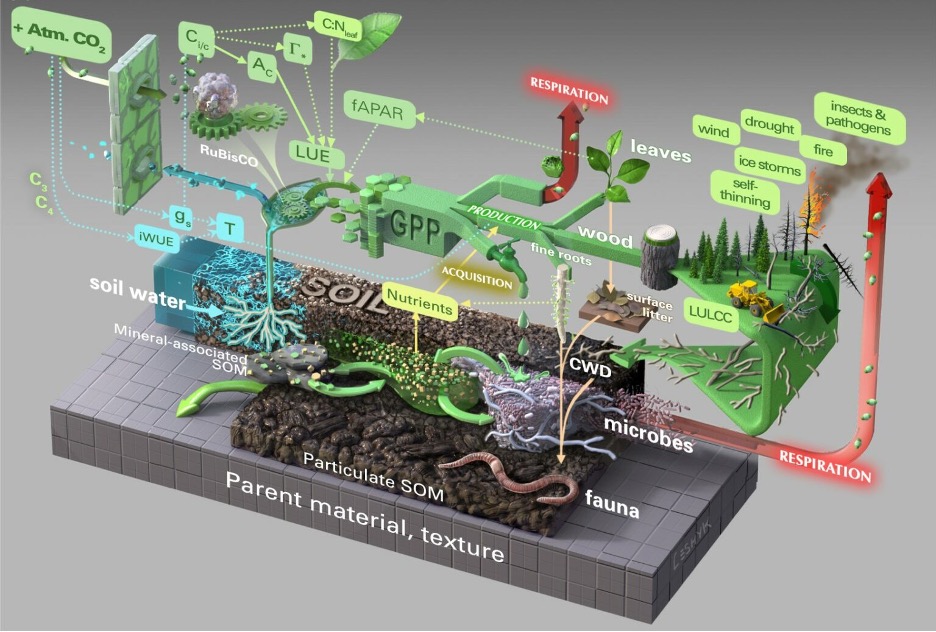Carbon Accounting for Environmental and Landscape Design

Image credit: Walker, A.P., et al. "Integrating the Evidence for a Terrestrial Carbon Sink Caused by Increasing Atmospheric CO2." New Phytologist 229 2413–2445 (2021). https://doi.org/10.1111/nph.16866.
LAN3801HS
Instructor: Robert Wright
Meeting Section: L0101
Tuesdays, 12:00-3:00 p.m.
This course comprehensively explores carbon accounting principles and their application in environmental and landscape design. Students will gain a deep understanding of the methodologies and tools used to measure, analyze, and reduce carbon emissions in landscape projects. Through lectures, case studies, hands-on projects, and expert guest sessions, students will learn to effectively integrate carbon accounting into their design processes. Carbon accounting is not antithetical to the design process; it is a critical part of design conceptual frameworks and approaches. Understanding and applying carbon accounting enhances the design process by ensuring that sustainability is embedded from the conceptual stage through to implementation. This approach leads to innovative and responsible design solutions that address environmental challenges while maintaining aesthetic and functional integrity.
Key Learning Objectives:
- Understand the fundamentals of carbon accounting and its significance in landscape architecture.
- Learn to quantify the carbon footprints of various landscape materials and design choices.
- Explore strategies to minimize carbon emissions in landscape projects.
- Develop skills to incorporate carbon accounting into project planning and design.
- Gain insights from industry experts on best practices and emerging trends in carbon-conscious design.

